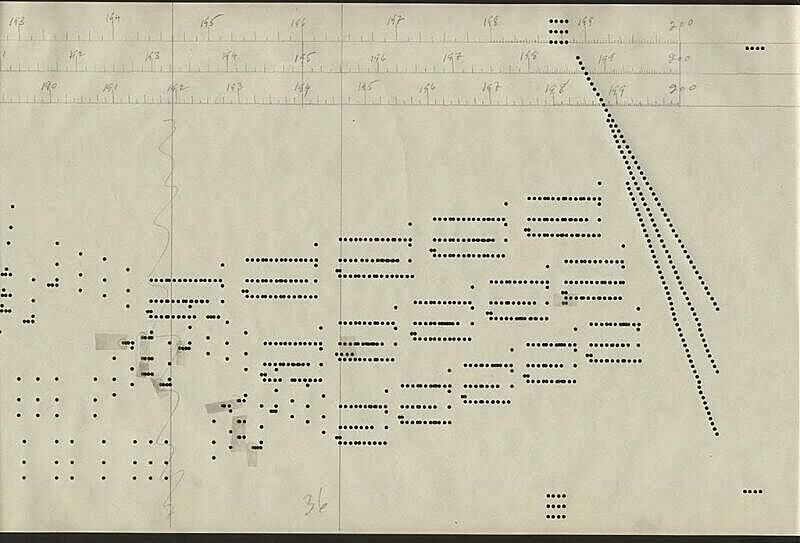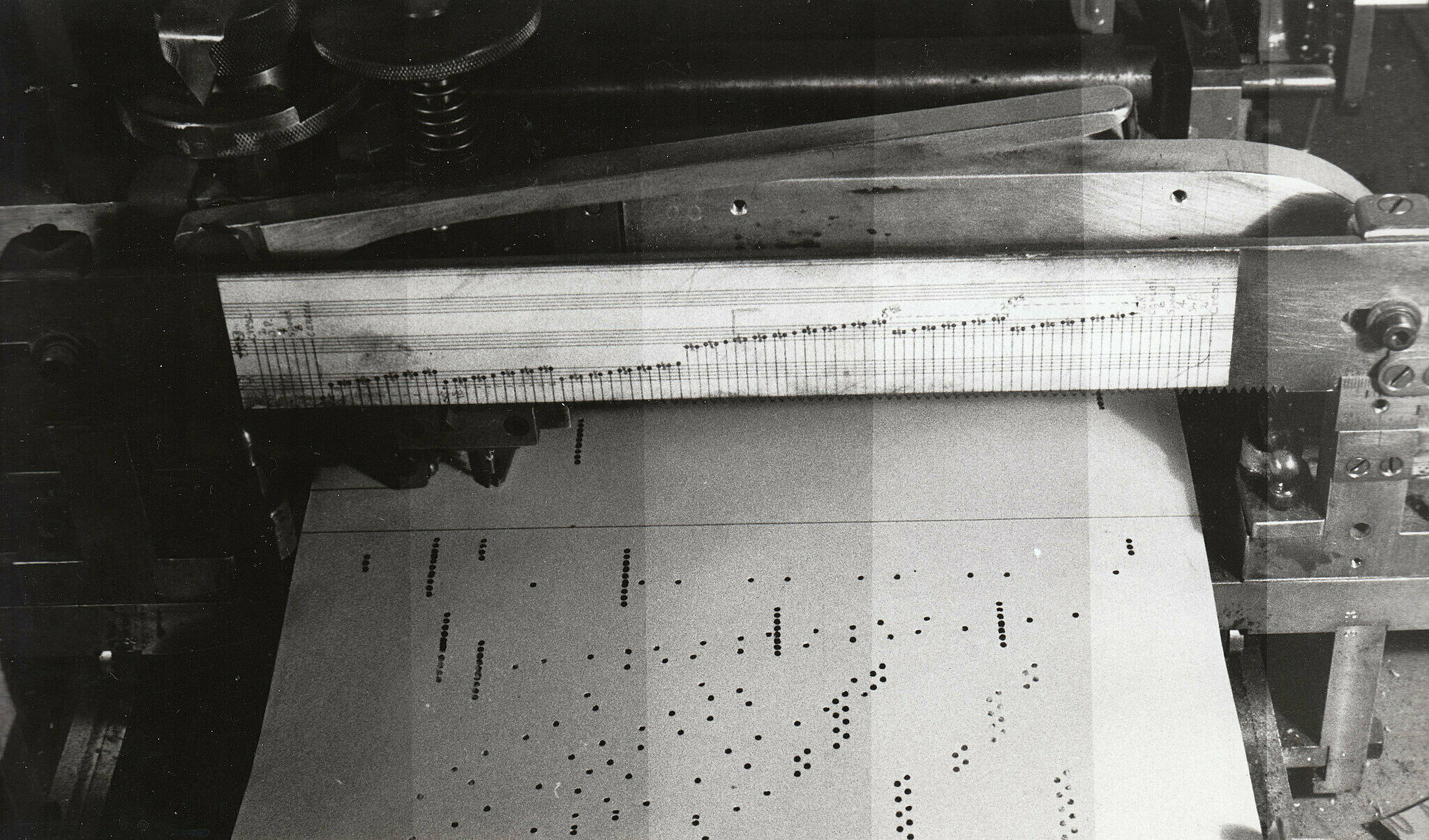The Player Piano in Print
Nov 19, 2015
Composer Conlon Nancarrow is known for creating staggeringly complex pieces through highly unusual means: rather than writing scores for live musicians to perform, he composed for the player piano. On the occasion of Anywhere in Time: A Conlon Nancarrow Festival, Hilary Greenbaum, the Whitney's Director of Graphic Design, describes how Nancarrow's medium inspired a print piece.
Browse it below, and pick up a copy in-person at the Museum.
The booklet for Anywhere in Time serves as an event schedule for the eleven-day festival, and also provides listening notes for all of Conlon Nancarrow's studies. How did its structure take shape?
When I got into researching Nancarrow's work, I found that it is rarely straightforward. His player piano rolls contain physical artifacts of his process, such as the hand-written notes that appear across the top of Study 49c. Beneath those notes is a frenzied mass of punched holes, and at the bottom are periodic, tightly structured perforations. I wanted to convey a sense of this sonic and visual complexity, so I translated this structure into a grid system (a way to demarcate space consistently from page to page). In the booklet, listening notes appear at the top of each page, body copy is confined to the middle, and instead of page numbers, dots travel incrementally along the bottom to create a kind of tempo.
The listening notes relate to the rest of the content on a given page in a random way, and this allows for some unexpected correlations. It's interesting to me that some of Nancarrow's studies began as visual explorations; they were formal compositions of dots that then got punched and played. Foregrounding the visual component is a very different way of scoring and experimenting with music. If you punched the holes in the pages of this book, you could actually play it—though I don’t know how it would sound.
In thinking through how to approach this piece, what did you find most engaging about Nancarrow’s practice?
I was inspired by the methodology Nancarrow created for himself. By scoring music exclusively for the player piano rather than live performers, Nancarrow placed restrictions on his output as a composer but simultaneously opened up space to exercise creativity. His decision to work within a framework that involves limitations resonates with me. My work at the Whitney is housed within a structured identity system. The basic tools I have to work with, such as the typeface, are consistent from project to project. Some could view this kind of practice as narrowly confined, and yet constraints can often prompt more robust experimentation.
Could you elaborate on that? How are constraints productive for you?
The Whitney's identity system narrows the options. Each time I have a design problem, I have to make the same toolkit do something different. Instead of changing the typeface or the color, it's about finding ways to apply the tools in a unique way. I find this to be a lot harder, and also a lot more rewarding, than repeating the same process over and over using different tools. Nancarrow's medium came with limitations—the language is pared down to holes punched in paper—but the compositions are completely unconventional. No two studies are alike.


